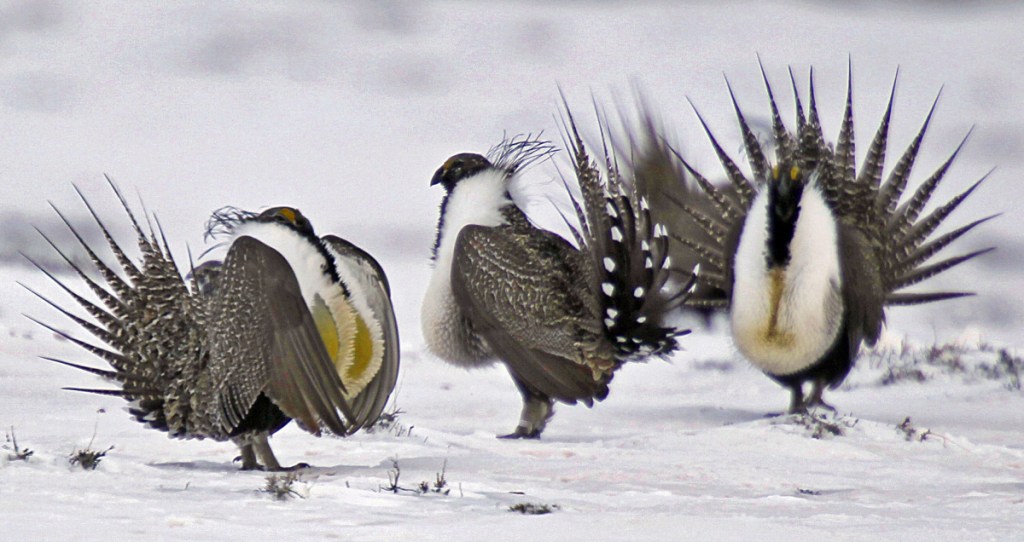DENVER — Some governors in the U.S. West say a new Trump administration directive threatens to undermine a hard-won compromise aimed at saving a beleaguered bird scattered across their region.
The directive, issued in late July, severely limits a type of land swap involving federal property. Critics say that eliminates an important technique for saving habitat for the shrinking population of greater sage grouse.
“It took one of our tools out of the toolbox,” said John Swartout, an adviser to Colorado Gov. John Hickenlooper.
Hickenlooper told federal officials in an Aug. 2 letter that he opposes the change. Nevada, Oregon and Utah also expressed opposition or concern.
A spokeswoman for the U.S. Bureau of Land Management, which issued the directive, said the agency would work with the governors on “adjusted” plans.
Greater sage grouse are spiky-tailed, ground-dwelling birds about the size of chickens. They are best known for the males’ showy displays in springtime mating dances.
They once numbered in the millions, but the U.S. Fish and Wildlife Service now estimates the population at 200,000 to 500,000. Experts blame energy development that broke up the bird’s habitat, along with disease, livestock grazing and other causes.
Their range covers about 270,000 square miles in parts of 11 Western U.S. states and two Canadian provinces. The largest concentrations are in Wyoming, Montana, Nevada and Idaho.
In 2010, the Obama administration said the bird would need protection under the Endangered Species Act, which would have brought restrictions on drilling, mining, ranching and other development.
But in 2015, the administration reversed course, announcing an intricate agreement called the Sage Grouse Initiative that relied on federal agencies, states, ranchers and others to save the bird without invoking potentially stricter limits under the endangered species law.
One tool that states planned to use was requiring developers – such as energy companies drilling for oil – to replace destroyed or damaged habitat with similar land elsewhere. The practice is called “off-site compensatory mitigation” and is envisioned as a last resort, if the damage cannot be avoided or minimized.
But the Bureau of Land Management, which oversees about 388,000 square miles of public land, announced on July 24 that it would no longer use mandatory off-site compensatory mitigation on most federal land.
The bureau said it did not have the legal authority to enforce the requirement. It was one of numerous Obama-era environmental regulations and practices rolled back by the Trump administration.
Hickenlooper, a Democrat, wrote a letter to the Bureau of Land Management saying the move “jeopardizes BLM’s ability to implement or enforce critical components” of the federal plan for the greater sage grouse in his state. He withdrew his support for the most recent version of the plan.
Nevada Gov. Brian Sandoval and Utah Gov. Gary Herbert, both Republicans, also expressed concern and asked for more information.
Send questions/comments to the editors.



Success. Please wait for the page to reload. If the page does not reload within 5 seconds, please refresh the page.
Enter your email and password to access comments.
Hi, to comment on stories you must . This profile is in addition to your subscription and website login.
Already have a commenting profile? .
Invalid username/password.
Please check your email to confirm and complete your registration.
Only subscribers are eligible to post comments. Please subscribe or login first for digital access. Here’s why.
Use the form below to reset your password. When you've submitted your account email, we will send an email with a reset code.